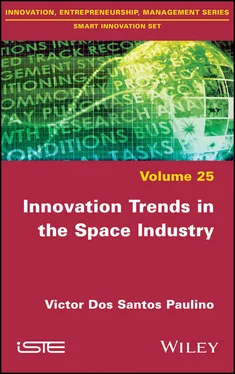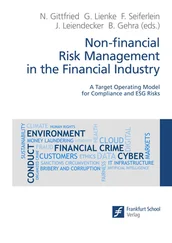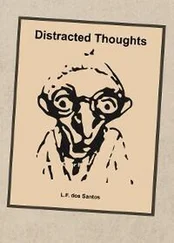To help existing space firms make this diagnosis, we turn to the theory of disruptive innovations. This theory, introduced by Christensen (1997), is currently one of the most widely used to understand technological discontinuities. It indicates that when it is launched, disruptive innovation is not a threat because it is not purchased by the customers of existing firms. Existing customers do not value the new performance criteria introduced by disruptive innovation. Only a small group of customers with a limited budget value these new criteria. In addition to not posing a threat to existing firms, disruptive innovation also does not present an opportunity because it involves low margins and volumes. Therefore, disruptive innovation is only proposed by new entrants. In the medium term, disruptive innovation becomes a major threat. On the one hand, the performance of the disruptive innovation increases, which encourages the customers of the existing firm to buy it. On the other hand, due to the existence of a first mover advantage, existing firms are unable to catch up with new entrants who will gradually dominate the market. To avoid the fate of companies like Kodak and Nokia, when a technological discontinuity is introduced, existing firms must determine whether it will become a disruptive innovation.
Faced with this imperative, the theory of disruptive innovations has two weaknesses. The first is a confusing definition of the concept of disruptive innovation. All discontinuous innovations tend to be too quickly assimilated to disruptive innovations (Schmidt and Druehl 2008). This theory also presents a low predictive value for existing firms. The latter must act when the new technology is introduced; however, at that time, there are no criteria for making a decision. Indeed, it is difficult to identify among the technological promises those that will fail and those that will become disruptive innovations (Danneels 2004; Tellis 2006).
To address these weaknesses, we explore the concept of potential disruptive innovation suggested by Danneels (2004). We propose a precise definition by identifying the short-term characteristics of disruptive innovations. By studying the case of satellite miniaturization in light of this definition, we show that small satellites are imperfect substitutes for traditional satellites. This new technology, which is part of the current acceleration of the commercialization of space, represents a low threat to existing firms.
By precisely defining potential disruptive innovations, we help reduce the confusion surrounding the concept of disruptive innovation. We also propose an analysis grid to improve the diagnosis of the threat of potential substitutes.
In Chapter 1, we introduce the theoretical and empirical framework of this book. We first present the definitions and theories used in innovation management. We then describe the space industry. In the following chapters, we successively study the three innovation trajectories mentioned above: the evolution of the space industry in light of economic considerations ( Chapter 2), the innovation strategies of space firms ( Chapter 3), and the strategic diagnosis of new technologies ( Chapter 4).
Конец ознакомительного фрагмента.
Текст предоставлен ООО «ЛитРес».
Прочитайте эту книгу целиком, на ЛитРес.
Безопасно оплатить книгу можно банковской картой Visa, MasterCard, Maestro, со счета мобильного телефона, с платежного терминала, в салоне МТС или Связной, через PayPal, WebMoney, Яндекс.Деньги, QIWI Кошелек, бонусными картами или другим удобным Вам способом.












